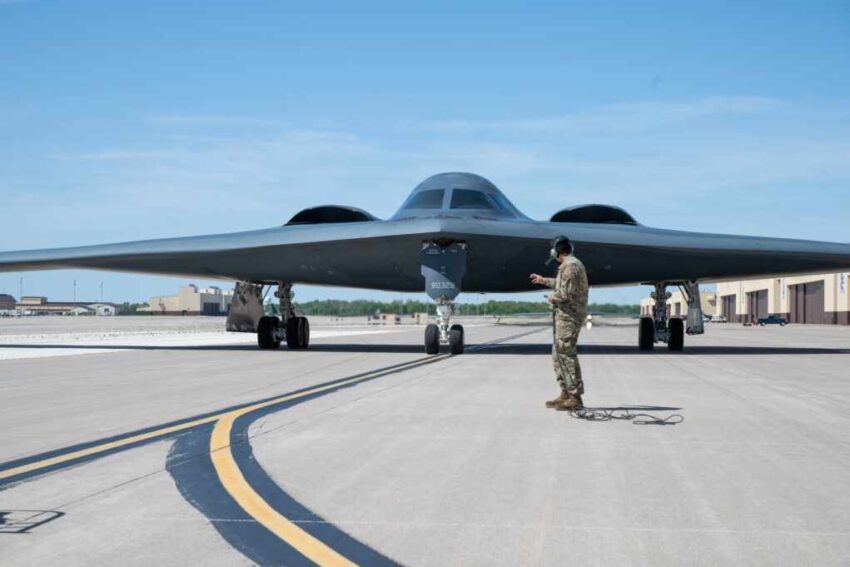The United States executed its most complex stealth mission in history with a 37-hour B‑2 bomber strike on Iran’s nuclear facilities, showcasing the unmatched reach and precision of airborne deterrence.
At a Glance
- Seven B‑2 Spirit bombers departed from Whiteman Air Force Base on 22 June.
- The mission covered 14,000+ miles round-trip, lasting 37 hours.
- Aircraft deployed 14 GBU‑57 bunker busters on Iranian nuclear sites.
- No radar detection or air engagement was reported during the flight.
The Mission Profile
Operation Midnight Hammer began with the coordinated takeoff of seven B‑2 Spirit stealth bombers from Whiteman Air Force Base, Missouri. Each was fitted with dual GBU‑57A/B Massive Ordnance Penetrators, 30,000-pound bombs engineered to breach hardened underground bunkers. The aircraft flew a transatlantic route refueling over the Mediterranean before entering contested airspace over the Middle East.
Hours ahead of the strike, Tomahawk missiles launched from a submerged U.S. submarine targeted radar installations and early-warning assets near Isfahan. Meanwhile, Israel allegedly conducted preemptive electronic warfare attacks, disabling key detection systems—though Tel Aviv has neither confirmed nor denied involvement.
Watch a breakdown video: How U.S. Stealth Bombers Hit Iran’s Nuclear Sites
Stealth Execution
The bombers approached Iranian airspace at altitudes exceeding 50,000 feet, using mountainous terrain, radar blind spots, and electronic countermeasures to evade detection. Despite flying across multiple defense zones, including those supported by Russian-made S-300 systems, no radar lock or intercept was recorded.
Once over target, the B‑2s released fourteen GBU‑57s—two per aircraft—on Fordow and Natanz enrichment complexes. These sites are deeply embedded in mountainous terrain, with Fordow located 80 meters underground. Additional cruise missiles rained down on the Isfahan research center from the USS Georgia in the Gulf.
Post-strike, the bombers reversed course, refueled over the Aegean Sea, and returned to base—all without ever breaking stealth.
Flight Coordination and Payload Metrics
Each B‑2 carried a dedicated flight crew rotating shifts mid-air using onboard rest compartments. The total flight duration exceeded 37 hours, requiring at least two aerial refuelings per aircraft. Tankers included KC‑135 Stratotankers and KC‑46 Pegasus units operating out of Europe and Turkey.
Altogether, the bombers delivered 420,000 pounds of ordnance, precisely sequenced to arrive at targets within a five-second synchronized window. CBS News reported that Pentagon engineers tested the synchronization algorithm for weeks under classified simulation before final go-order.
The U.S. has not revealed whether any drones or satellite-guided assets accompanied the strike, but defense sources suggested the mission used real-time global tracking to ensure mid-flight corrections.
With its scale, secrecy, and precision, Operation Midnight Hammer may redefine the upper limit of long-range strike capabilities.
Click this link for the original source of this article.
Author: Editor
This content is courtesy of, and owned and copyrighted by, https://deepstatetribunal.com and its author. This content is made available by use of the public RSS feed offered by the host site and is used for educational purposes only. If you are the author or represent the host site and would like this content removed now and in the future, please contact USSANews.com using the email address in the Contact page found in the website menu.








